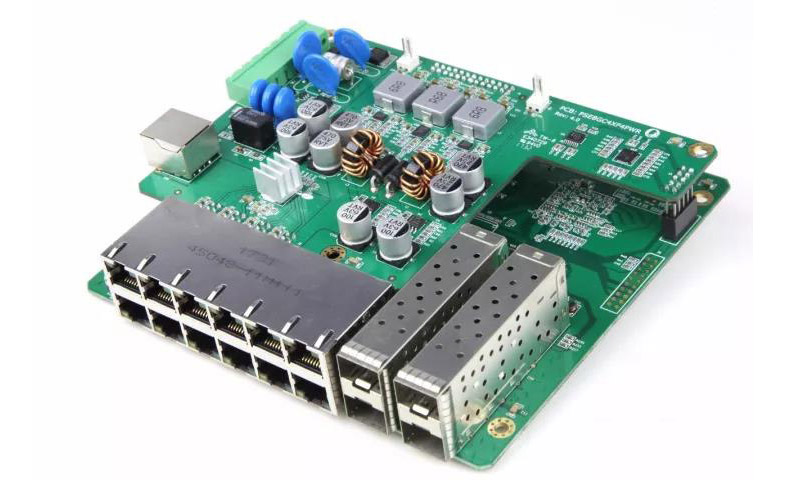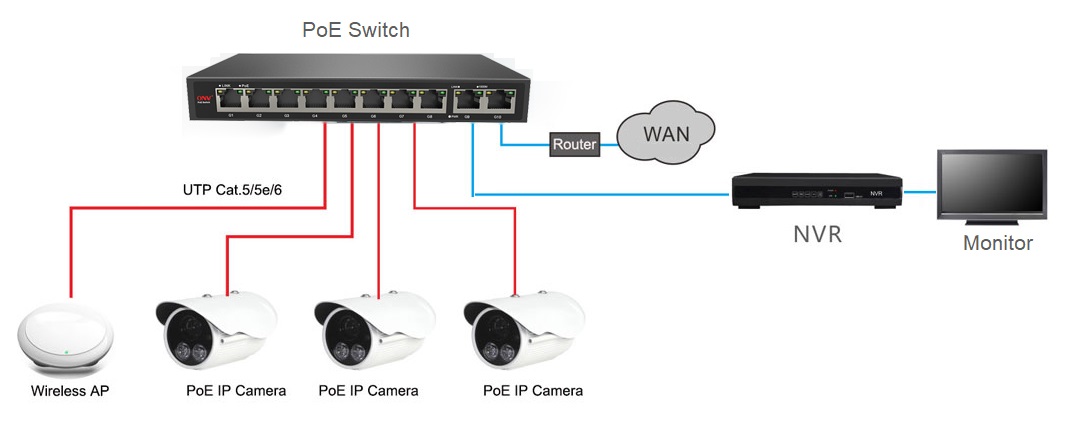With the rapid development of the security industry, the PoE switch is widely used in various security monitoring systems. However, due to the cost, some non-standard PoE switches are coming out.

What is the PoE switch?
A PoE switch is a network switch that is built into the Power over Ethernet injector. Simply connect other network devices to the switch as normal, and the switch will detect whether they are PoE compatible and auto-sensing enables power. PoE switches are available to suit all applications, from low-cost unmanaged edge switches with a few ports, up to complex multi-port rack-mount units with sophisticated management.
The classification of PoE switch
1. Standard PoE Switch
The standard PoE switch is compatible with IEEE 802.3 af/at, 48V switch. There are two parts in a complete PoE system, the PSE, power sourcing equipment, and the PD, power device. The PoE switch belongs to the PSE device. In general, the PSE is the terminal device which is the administrator during the PoE process, and the PD is the terminal device that is to be powered. (There is a PD chipset in the 48V standard device.)
2. Non-standard PoE switch
The non-standard PoE switch is known as 24V, there are also 48V, 12V, and 5V switches.
The main application of the PoE switch
The PoE switch is mainly used for data and power transmission in CCTV (supply power to IP Camera), wireless coverage (supply power to AP) wireless transmission (supply power to bridge), etc.

Working Process of Standard PoE Switch

1. Detection
PSE works to provide a tiny voltage to the device port till a receiving end that is compatible with IEEE 802.3 af is found.
2. Classification for PD device
When a PD, the device would classify the PD and evaluate its power consumption it.
3. Start to power up
During the start-up period of a configurable time (generally less than 15 μs), PSE equipment began to supply power from a low voltage to PD equipment until it provided 48V of DC power.
4. RTP and power management
Provide a stable and reliable DC48V for PD equipment, and meet the requirement of the power consumption of PD equipment less than 15.4W.
5. Disconnection
If the PD device is disconnected from the network, PSE will quickly cease to power the PD equipment within 300-400ms and repeat the detection process to detect whether the cable terminal is connected to PD equipment.
Multimeter testing way for standard and non-standard PoE switch
Boot device, set the multimeter to voltage measuring gear and use the two pens of it to tap the PSE equipment’s power supply feet (usually RJ45 port of 1/2, 3/6 or 4/5, 7/8) respectively, if there is a stable voltage output tested, such as 12, 24, 48V, then the equipment is non-standard PoE products. During the process, the PSE won't detect the multimeter and provide 12V, 24V, or 48V directly.
If can't test an exact voltage value, the meter is beating between 2 and 10V, then the device is a standard PoE product. During the process, the PSE is detecting the multimeter, but there is a stable voltage output due to the multimeter is not a standard PD.